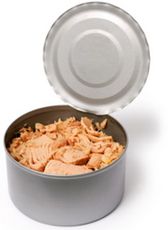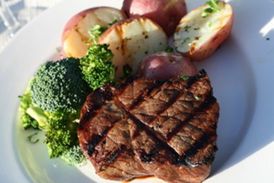

If you’ve heard of the Atkins Diet, then you’re probably familiar with low-carb eating. The premise of the low-carb diet (and there are many others besides the more-famous Atkins Diet) is simple: by depriving your body of it’s preferred fuel, the carbohydrate, you force it to rely on fat stores for energy.
So how in the heck does THAT fit in with a GLUTE-BUILDING plan?
I’ll tell you and it’s for a number of reasons...all of which have the potential to put even more inches onto your glutes while keeping you lean!
And before I go any further, the low-carb/reduced-calorie eating is only going to be 2 days a week, IF you decide to give it a try. It’s totally optional but I’ve found it to be an extremely useful technique for actually increasing muscle growth while keep body fat gains to a minimum. If you prefer not to utilize the Low Carb Option, though, no problem!
You can do it every week, every other week or even every third week - it’s totally up to you.
Here’s why it works...
When you restrict carbs, your body uses up it’s stores of glycogen (the form in which carbs are stored in your muscles and liver for later use by the body). Over the course of a day or two of restricted-carb eating, your body uses up all that stored glycogen.
Your body doesn’t like being deprived...
So this deprivation sets up a need in your body to STORE as many carbs as it can when you introduce them back into your diet. You might be familiar with the term "carb loading"...that’s exactly what this is all about.
When you go back to eating carbs, your body can store up to one and a half times the amount of glycogen as it normally would.
Now here’s the thing...glycogen stores don’t really do a whole lot for muscle growth directly BUT what happens when your body is
rapidly taking up extra carbs into the muscles is that a lot of water and other nutrients (like amino acids) come along for the ride.
That is an EXTREMELY anabolic situation in your body! We’re basically trying to mimic the effects of "rebound weight gain" that people on diets see when they come off a diet only in a good way.
It’s this anabolic inrush of nutrients and water that we’re looking to take advantage of with the carb-deprivation and loading.
One of the other big pieces of the puzzle with low-carb eating is insulin. Insulin is your body’s primary storage hormone. It’s absolutely critical for maximum muscle growth.
Your body CAN get amino acids and other nutrients into the muscles without high insulin levels. Think of that is as people going in the front door of a house one by one. It still happens but it’s not particularly fast or efficient.
When insulin levels are elevated, we open up the BIG garage doors and let a TON more people in at once. Insulin is the hormone that opens up the big doors and really lets the nutrients into the cells.
Granted, this can work on both muscle AND fat cells, so you don’t want high insulin levels all the time.
You also want your body to be able to achieve that big-door effect with as little insulin as possible...the more sensitive your muscle cells are to the effects of insulin, the more bang for your buck you’re going to get with insulin.
Here’s the thing...when you eat carbs all the time, your insulin sensitivity decreases. You don’t get the same big response as you do if you’re more sensitive to it.
When you remove carbs from your diet, your body automatically begins to get more sensitive to the effects of insulin so when you do put the carbs back...BAM. The door opens and the carbs and other nutrients are able to come flooding in to the muscle cells.
Low-carb eating is one of THE best way to lose fat. It’s a fact. By purposefully including very short fat-loss cycles into each week of glute training, we’re giving your body a chance to burn off any fat gains that might have happened over the previous 5 days.
After all, what good is to get big glutes if you just end up looking bigger and fatter overall? We want to build the glutes without excessive fat gain.
These two days of lower-calorie, low-carb eating will accomplish exactly that. Because we’re not doing any training on those low- carb days, muscle breakdown will be very minimal and won’t be anything to worry about.
From a hormonal perspective, you need dietary fat in order to manufacture hormones such as testosterone. On the other hand, when you’re looking to gain muscle without adding a lot of fat, you don’t want to be eating tons of dietary fat, especially when insulin levels are high or it’ll potentially get stored in the fat cells more easily.
So by increasing your fat intake on the low-carb days, you’ll get the best of both worlds. You’ll be able to take advantage of the hormonal benefits of higher-fat eating while keeping to somewhat lower-fat and higher-carb eating on the weekdays where you want higher insulin levels.
One of the biggest problems people have with gaining muscle is eating enough food to gain muscle!
The counterintuitive thing here is that simply trying harder to eat more and more food is NOT the best solution to that problem. All you’re doing is stuffing more food into an already stuffed and overworked digestive system and that will get you nowhere.
By eating low-calorie and low-carb (which will basically be protein, healthy fats and veggies) for two days, you’re going to help clean out your digestive system and give it a break from being stuffed full of food all the time. This will help it function more efficiently when you do go back to eating more again during the week.
The other benefit...eating less food for a few days is going to make you hungry! And there’s nothing like being hungry to help increase your appetite...

In order to eat a low-carb diet, you must reduce your carbohydrate intake to 30 to 50 grams per day. You can certainly go below this as well.
I normally recommend shooting for 30 grams a day as extra carbs have a way of sneaking into foods. Aiming for the low end means you’ll be much more likely to stay within the proper range.
This is done by eliminating or drastically reducing intake of carbohydrate-containing foods such as breads, fruits, rice, pasta, cereals, grains, sugars, etc.
You will be focusing your food intake on low-carb foods such as meats, fish, poultry, healthy oils (fish oil, flax, hemp, borage, etc.), vegetables, salads and cheese.
It is essential that you read labels and know exactly what you’re eating when you do low carb. There can be hidden carbs even in foods you may not think of as low carb.
To further help you in the low-carb days of this program, I’ve provided resource links for more detailed information on how to do a low-carb diet. These sites explain in great detail how to follow a low-carb diet. On these sites, you’ll find meal plans, charts of the number of carbs in certain foods, food to avoid, etc.

My personal preference when eating low carb is to focus primarily on natural, low carb foods such as meat, eggs, cheese, vegetables, salads, healthy oils, etc. rather than foods that are manufactured to be low carb. This focus will definitely help you to keep your nutrition low carb.
To maximize the fat loss and health benefits of the low carb phase, you can also try eating fairly low-fat, low-carb foods while adding in healthy oils such as fish oil, flax oil, olive oil, etc. for energy.
I personally recommend AGAINST eating bacon and sausage and other processed, fatty meats regularly even on a low carb diet. They’re okay as an occasional treat but don’t rely on them as a regular part of your diet. Being on a low-carb diet should not be a license to eat garbage food, regardless of whether it is low carb or not. This food still needs to be processed by your body, after all!
While keeping track of net carbs, effective carbs and impact carbs may be good for some, I personally don’t recommend frequently eating foods that rely on these definitions and alterations. Naturally low carb foods, in my opinion, are simply better for you.
The less processing a food has been through, the easier it is for your body to work with. Manufactured low-carb foods are, in many cases, just the same junk food repackaged in a low-carb format to give the appearance of "healthy." My recommendation is to eliminate or minimize the use of these foods. The body simply wasn’t designed to digest the large amounts of sugar alcohol that most of these rely on to sweeten their products.
In addition to eating low-carb, we also want to be relatively low-calorie, with a moderate caloric deficit of about 300 to 500 calories per day below your maintenance levels. Generally speaking this is going to be around 1200 to 1800 calories per day, depending on your bodyweight.
In addition to the hormonal and carb-loading effects of these two days, the reduced calorie levels will also set up a deficit and a physical need in your body to catch up.
We really want to take full advantage of rebound weight gain here!
With these two days, if you don’t want to try low-carb eating, it might be worth trying out at least low-calorie eating. It won’t give you quite the same rebound as low-carb but it will definitely rest the digestive system and give you a moderate rebound.
Since you’re already eating a fair bit of food during the week and not really dieting strictly, it might be a bit of a stretch to call this a cheat meal...but I’m going to anyway.
This meal should be eaten as your post-workout meal after the Friday training session. We want this to be a BIG meal...eat foods you might not normally eat even on a regular muscle-building diet. The idea here is to spike your metabolism right before you hit two days of low-carb eating.